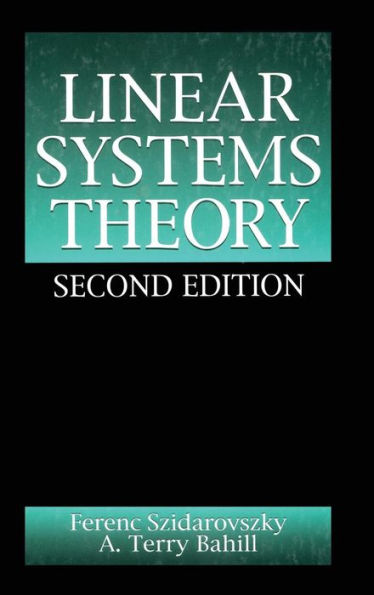Linear Systems Theory
This second edition comprehensively presents important tools of linear systems theory, including differential and difference equations, Laplace and Z transforms, and more.
Linear Systems Theory discusses:Nonlinear and linear systems in the state space form and through the transfer function method
Stability, including marginal stability, asymptotical stability, global asymptotical stability, uniform stability, uniform exponential stability, and BIBO stability
Controllability
Observability
Canonical forms
System realizations and minimal realizations, including state space approach and transfer function realizations
System design
Kalman filters
Nonnegative systems
Adaptive control
Neural networks
The book focuses mainly on applications in electrical engineering, but it provides examples for most branches of engineering, economics, and social sciences.
What's New in the Second Edition?
Case studies drawn mainly from electrical and mechanical engineering applications, replacing many of the longer case studies
Expanded explanations of both linear and nonlinear systems as well as new problem sets at the end of each chapter
Illustrative examples in all the chapters
An introduction and analysis of new stability concepts
An expanded chapter on neural networks, analyzing advances that have occurred in that field since the first edition
Although more mainstream than its predecessor, this revision maintains the rigorous mathematical approach of the first edition, providing fast, efficient development of the material.
Linear Systems Theory enables its reader to develop his or her capabilities for modeling dynamic phenomena, examining their properties, and applying them to real-life situations.
1101531829
Linear Systems Theory discusses:
The book focuses mainly on applications in electrical engineering, but it provides examples for most branches of engineering, economics, and social sciences.
What's New in the Second Edition?
Although more mainstream than its predecessor, this revision maintains the rigorous mathematical approach of the first edition, providing fast, efficient development of the material.
Linear Systems Theory enables its reader to develop his or her capabilities for modeling dynamic phenomena, examining their properties, and applying them to real-life situations.
Linear Systems Theory
This second edition comprehensively presents important tools of linear systems theory, including differential and difference equations, Laplace and Z transforms, and more.
Linear Systems Theory discusses:Nonlinear and linear systems in the state space form and through the transfer function method
Stability, including marginal stability, asymptotical stability, global asymptotical stability, uniform stability, uniform exponential stability, and BIBO stability
Controllability
Observability
Canonical forms
System realizations and minimal realizations, including state space approach and transfer function realizations
System design
Kalman filters
Nonnegative systems
Adaptive control
Neural networks
The book focuses mainly on applications in electrical engineering, but it provides examples for most branches of engineering, economics, and social sciences.
What's New in the Second Edition?
Case studies drawn mainly from electrical and mechanical engineering applications, replacing many of the longer case studies
Expanded explanations of both linear and nonlinear systems as well as new problem sets at the end of each chapter
Illustrative examples in all the chapters
An introduction and analysis of new stability concepts
An expanded chapter on neural networks, analyzing advances that have occurred in that field since the first edition
Although more mainstream than its predecessor, this revision maintains the rigorous mathematical approach of the first edition, providing fast, efficient development of the material.
Linear Systems Theory enables its reader to develop his or her capabilities for modeling dynamic phenomena, examining their properties, and applying them to real-life situations.
Linear Systems Theory discusses:
The book focuses mainly on applications in electrical engineering, but it provides examples for most branches of engineering, economics, and social sciences.
What's New in the Second Edition?
Although more mainstream than its predecessor, this revision maintains the rigorous mathematical approach of the first edition, providing fast, efficient development of the material.
Linear Systems Theory enables its reader to develop his or her capabilities for modeling dynamic phenomena, examining their properties, and applying them to real-life situations.
250.0
In Stock
5
1

Linear Systems Theory
526
Linear Systems Theory
526
250.0
In Stock

Product Details
| ISBN-13: | 9780849316876 |
|---|---|
| Publisher: | Taylor & Francis |
| Publication date: | 11/25/1997 |
| Series: | Systems Engineering |
| Edition description: | REV |
| Pages: | 526 |
| Product dimensions: | 6.12(w) x 9.19(h) x (d) |
From the B&N Reads Blog
